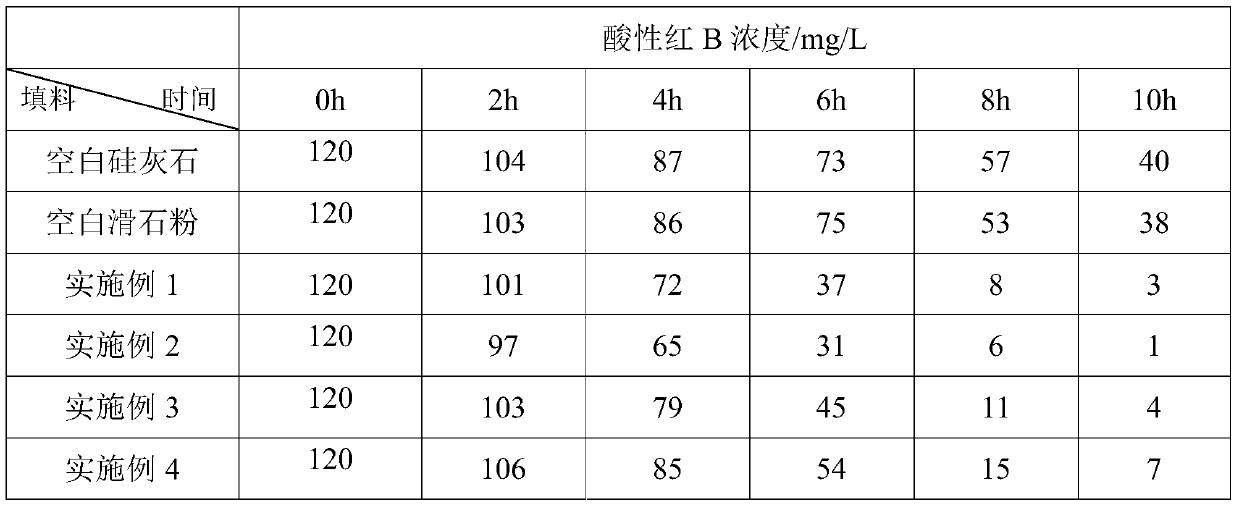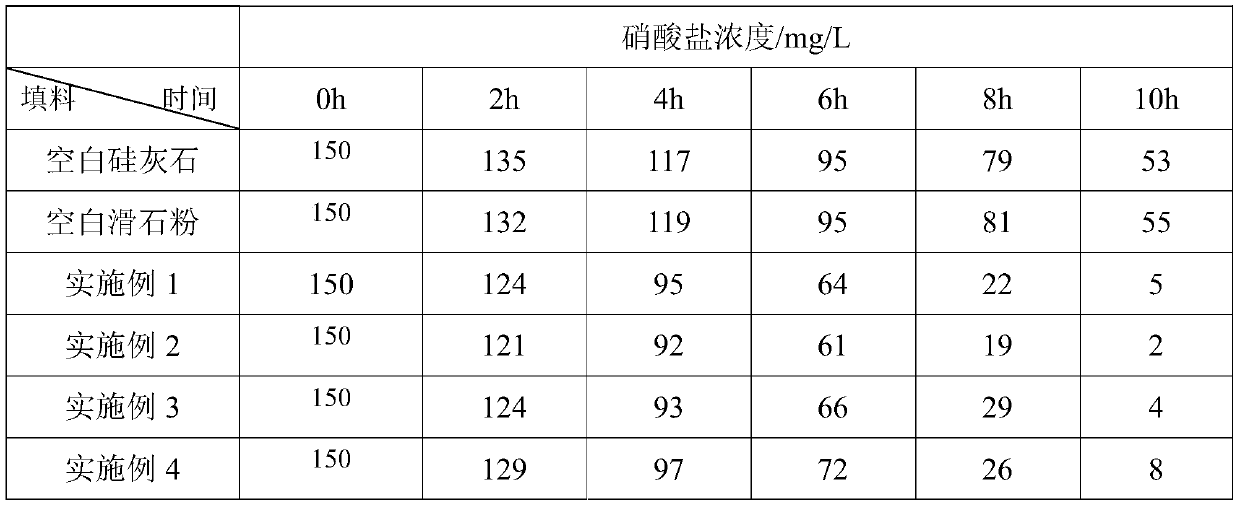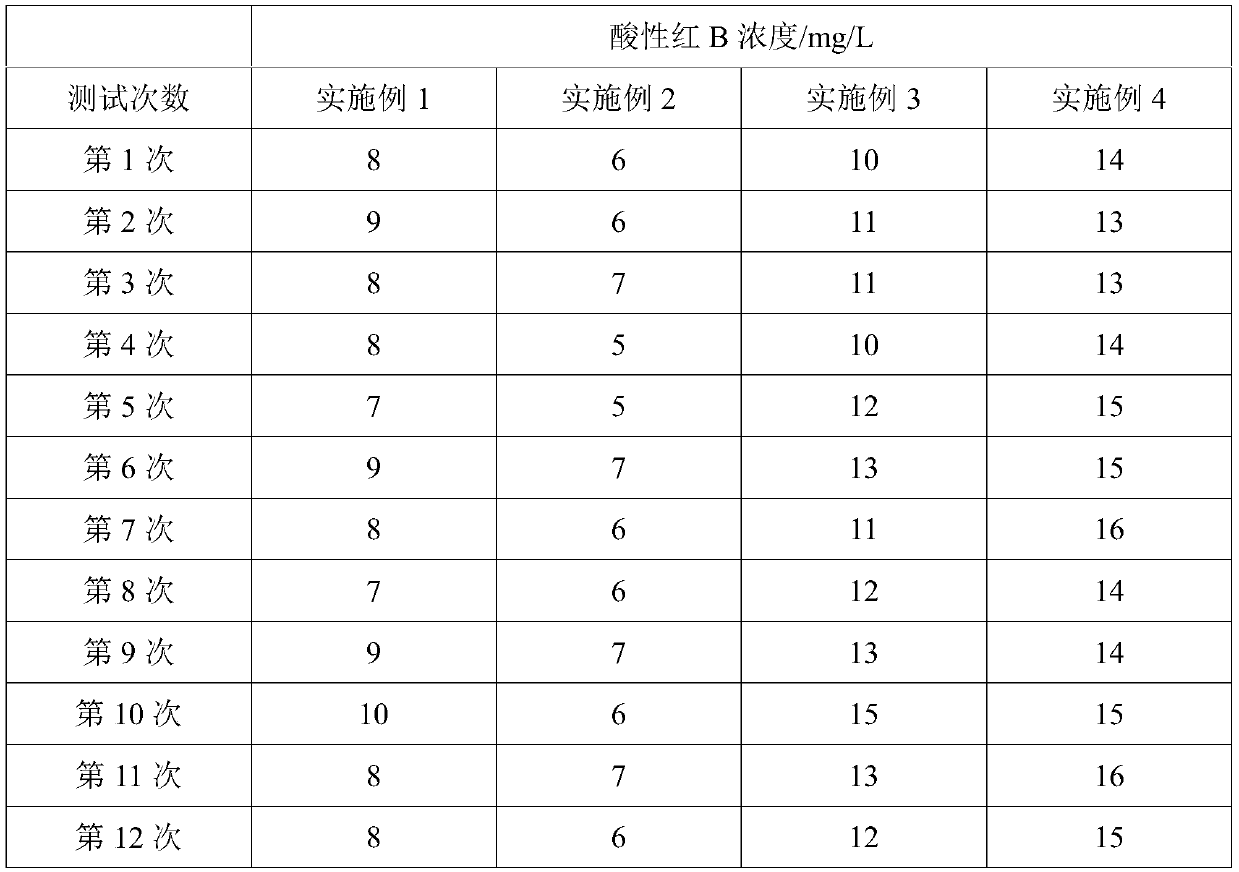Preparation method for grafting anthraquinone compound on surface of inorganic filler and application
An inorganic filler and surface grafting technology, which is applied in chemical instruments and methods, water pollutants, anaerobic digestion treatment, etc., can solve the problems of low final yield, long reaction steps, high risk, etc., and achieve simple reaction process , less reaction steps, good stability
- Summary
- Abstract
- Description
- Claims
- Application Information
AI Technical Summary
Problems solved by technology
Method used
Image
Examples
Embodiment 1
[0036] Stir 100 parts of absolute ethanol, 12 parts of 3-(2,3 glycidoxy) propyltriethoxysilane and 1 part of dilute hydrochloric acid with a mass concentration of 0.01wt% at room temperature for 0.5 hours, and add to 50 parts of In wollastonite with a particle size of 20 μm, the temperature was raised to 70° C., reacted for 3 hours, the temperature was lowered, filtered, the filtered solid was washed three times with absolute ethanol, and dried to obtain epoxy-modified wollastonite.
[0037] Add 100 parts of epoxy-modified wollastonite, 12 parts of 1,5-diaminoanthraquinone, 350 parts of toluene and 0.7 parts of 2-methylimidazole into the container, stir and react at room temperature for 2 hours, filter, and filter out the solid Wash three times with absolute ethanol and dry to obtain wollastonite grafted with anthraquinone compound on the surface. FT-IR analysis, product at 1668cm -1 A strong and sharp absorption peak appears at , which is the characteristic absorption peak o...
Embodiment 2
[0039] 100 parts of methanol, 20 parts of 3-(2,3 glycidoxy) propyltrimethoxysilane and 1 part of dilute hydrochloric acid with a mass concentration of 0.01 wt% were stirred at room temperature for 1 hour, and added to 100 parts of In the glass microbeads, the temperature was raised to 48°C, and the reaction was carried out for 5 hours, the temperature was lowered, filtered, the filtered solid was washed three times with absolute ethanol, and dried to obtain epoxy-modified glass microbeads.
[0040]Add 100 parts of epoxy-modified glass microspheres, 20 parts of 1-aminoanthraquinone, 500 parts of absolute ethanol and 0.5 parts of 1-methylimidazole into the container, stir and react at room temperature for 7 hours, filter, and filter out the solid for Wash with absolute ethanol three times and dry to obtain glass microspheres grafted with anthraquinone compound on the surface. The elemental analysis method was used to measure the N element content of the glass beads before and af...
Embodiment 3
[0042] 100 parts of isopropanol, 28 parts of 2-(3,4-epoxycyclohexyl) ethyltriethoxysilane and 1 part of dilute hydrochloric acid with a mass concentration of 0.01wt% were stirred at room temperature for 1.5 hours, and added to 200 parts In talc powder with an average particle size of 100 μm, the temperature was raised to 70° C., reacted for 1 hour, the temperature was lowered, filtered, and the filtered solid was washed three times with absolute ethanol and dried to obtain epoxy-modified talc powder 1.
[0043] Add 100 parts of epoxy-modified talc powder 1, 25 parts of 1-aminoanthraquinone, 450 parts of tetrahydrofuran and 0.5 parts of 1-methylimidazole into the container, stir and react at room temperature for 3 hours, filter, and filter out the solid with anhydrous Washed with ethanol for 3 times and dried to obtain talcum powder 1 grafted with anthraquinone compound on the surface. FT-IR analysis, product at 1667cm -1 A strong and sharp absorption peak appears at , which i...
PUM
 Login to View More
Login to View More Abstract
Description
Claims
Application Information
 Login to View More
Login to View More - R&D
- Intellectual Property
- Life Sciences
- Materials
- Tech Scout
- Unparalleled Data Quality
- Higher Quality Content
- 60% Fewer Hallucinations
Browse by: Latest US Patents, China's latest patents, Technical Efficacy Thesaurus, Application Domain, Technology Topic, Popular Technical Reports.
© 2025 PatSnap. All rights reserved.Legal|Privacy policy|Modern Slavery Act Transparency Statement|Sitemap|About US| Contact US: help@patsnap.com



